Even with several communication options available (like chat or video conferencing), business emails are still king in the workplace. Employees still spend half their work day, an average of four hours, sending out 90 billion business emails. And it doesn’t look like that’ll be changing anytime soon. By 2018, business emails will account for over 139.4 billion emails per day.
With businesses relying so heavily on fast and timely written communication like emails, it’s amazing that most employees’ exposure to professional business-writing practices is usually limited to maybe one or two classes in college. Clear business communications, no matter the medium, can save time, increase productivity, and prevent misunderstandings and conflict.
So here are seven tips to keep your emails professional and effective:
1. Keep it quick, simple, and focused.
Cut out any preamble or backstory and lead with your main point. State your specific need in the first sentence, or in the subject line when possible. Be sure to communicate a time frame if there is one, especially if the request is urgent or time sensitive.
Like this:
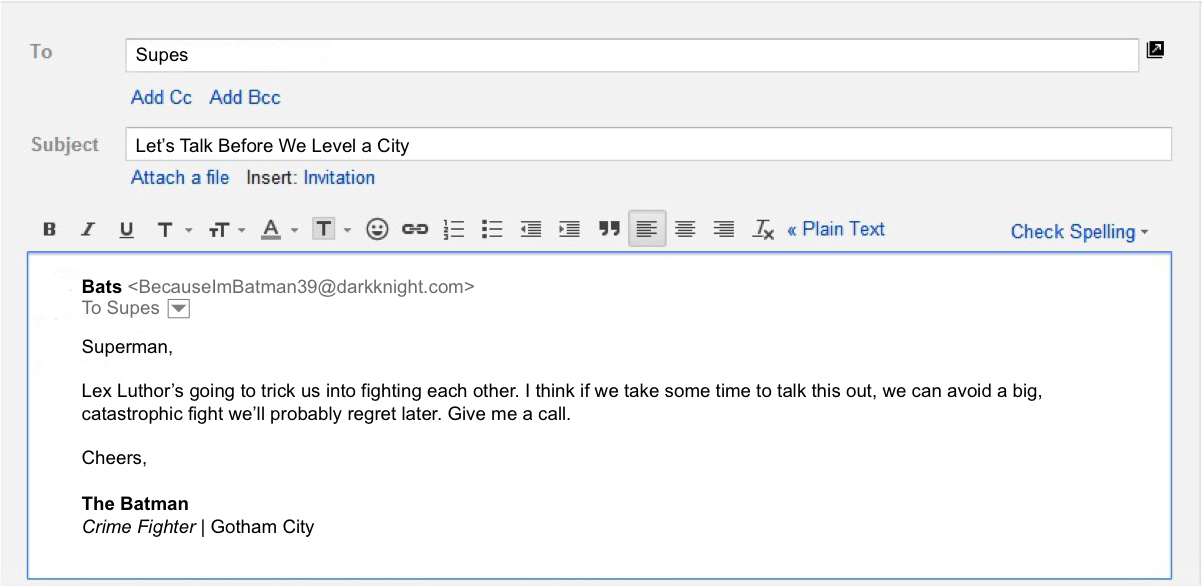
Not this:

2. Format for clarity.
If your email is more complex, involving multiple questions or topics, then break it up into digestible chunks. Lists—both bulleted and numbered—can help you organize your thoughts and make it easier for your contact to respond.
Like this:

Because it makes the reply so much easier to format. Like this:

3. Avoid jargon, buzzwords, all caps, all lowercase, emoticons, and textspeak.
None of these belong in a professional email. Don’t use multiple exclamation points or question marks or your email may be mistaken for spam. And always make sure you review your email twice for any typos or misspellings before you hit send.
Don’t do this:
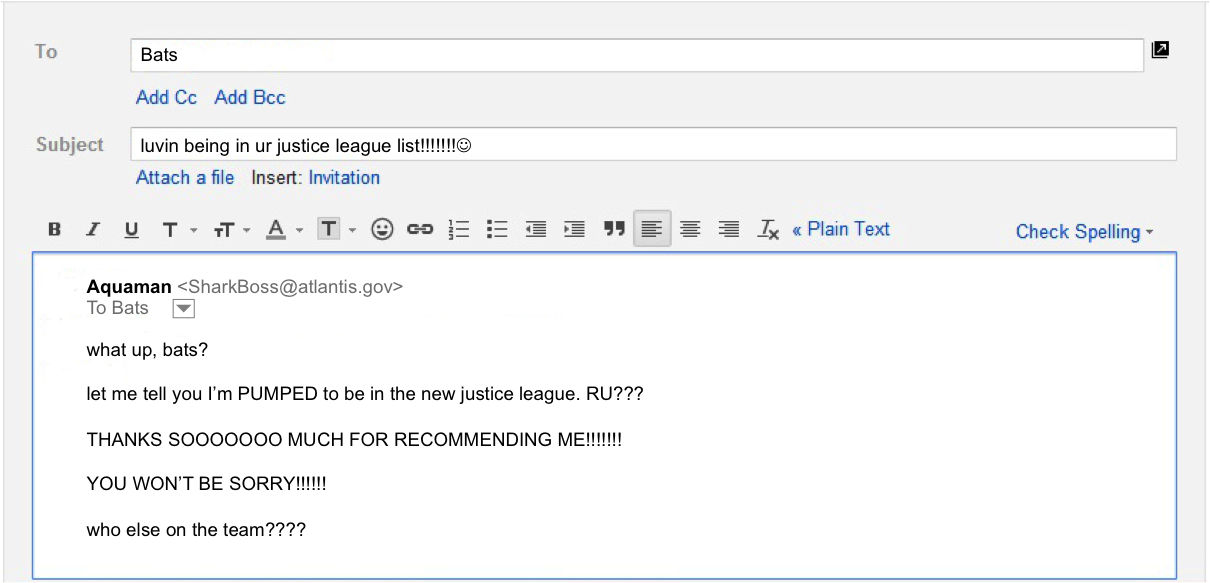
4. Don’t keep them waiting for a reply.
A lot can happen to an email. A bad connection, misspelled address, or an overzealous spam filter can prevent an email from arriving safely in your inbox. So don’t wait too long to respond or keep the sender waiting. A common threshold is 24 hours, but even that is stretching it. Even if you don’t have the information or materials requested by the email, you can always write back and say: “It’s coming, it’s just taking some time to gather what you requested.” And always make sure you finish an email discussion with a “thank you” or a “got it” note.
In other words, don’t be this person:
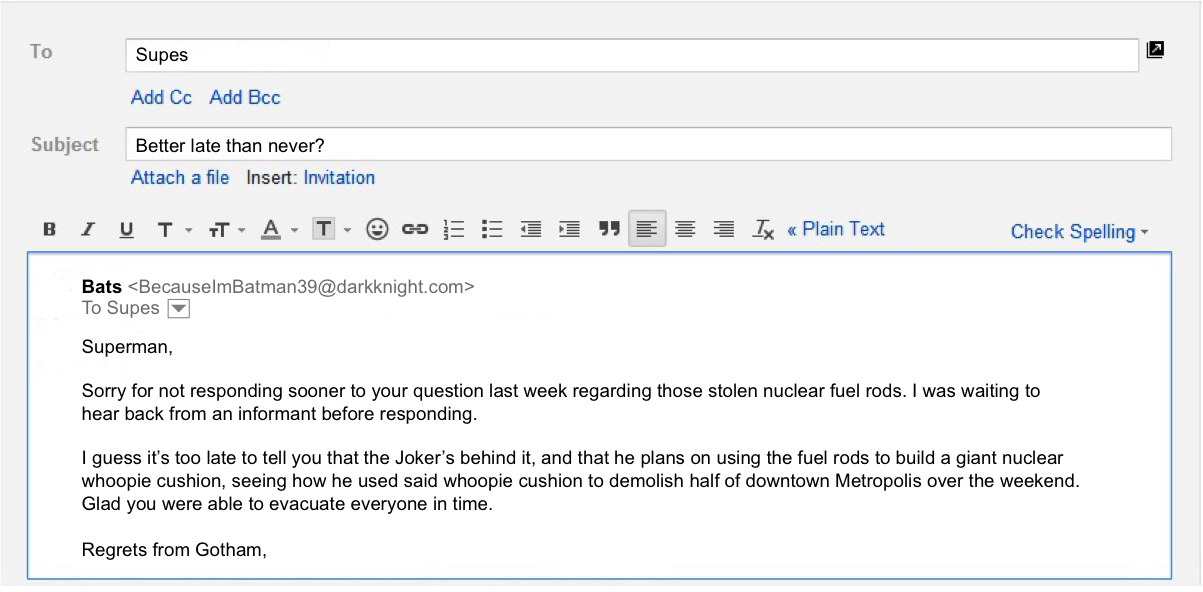
5. Read and respond to the whole email.
It’s infuriating when the person you emailed only responds to the first item in your message and ignores your other questions and concerns. Don’t be that person. Take the time to read the entire email before you respond. Address each item, but remember to always keep it short. If you can’t—if there’re too many issues or too many people involved—then it’s time to escalate the issue to a phone call or meeting.
For example, please don’t respond to an email like this:
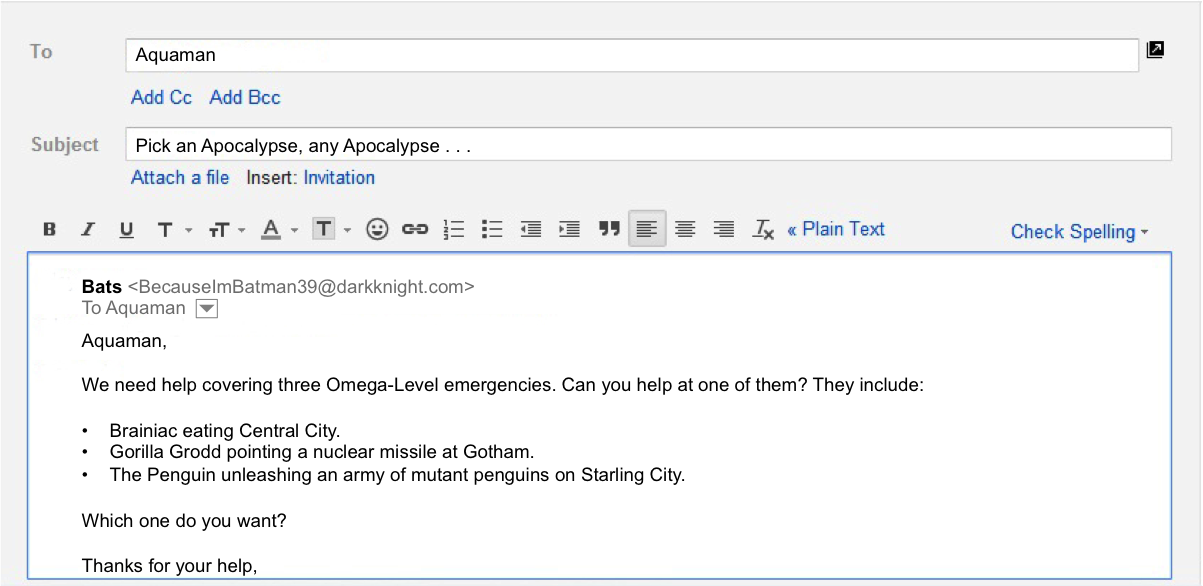
With this:
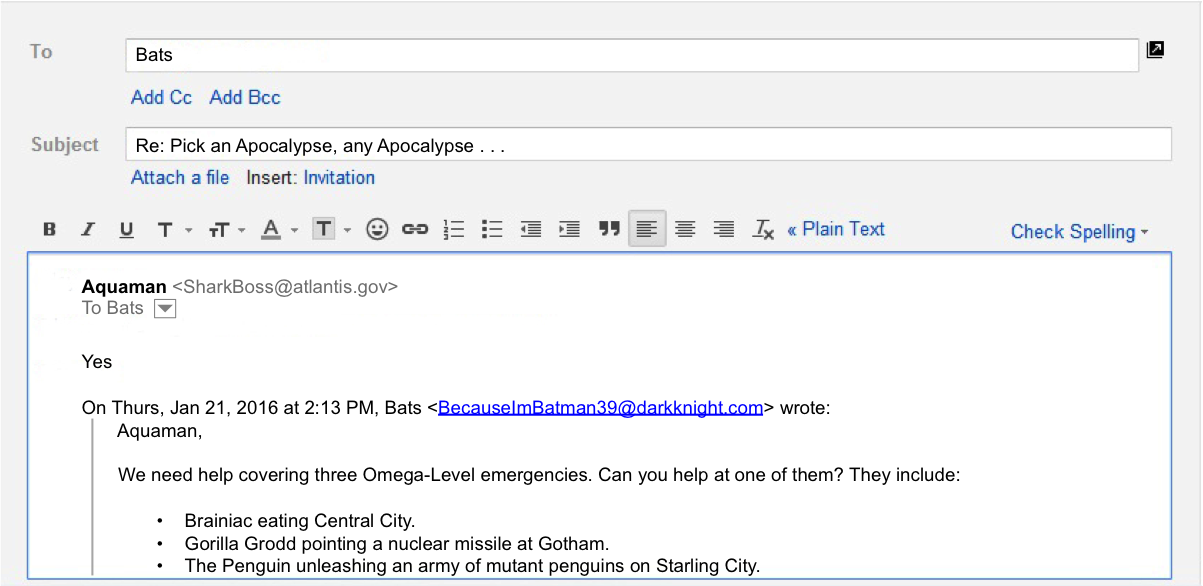
6. Never hit “Send” when you’re angry.
Written communication is incomplete. It’s easy to misunderstand the meaning of an email and perhaps get insulted. Do yourself a favor and walk away. Take time to calm down. Re-read the email later with a clear mind, and give the sender the benefit of the doubt. Only then should you begin drafting a response.
So if you’re responding to the second email from #5, don’t do this:
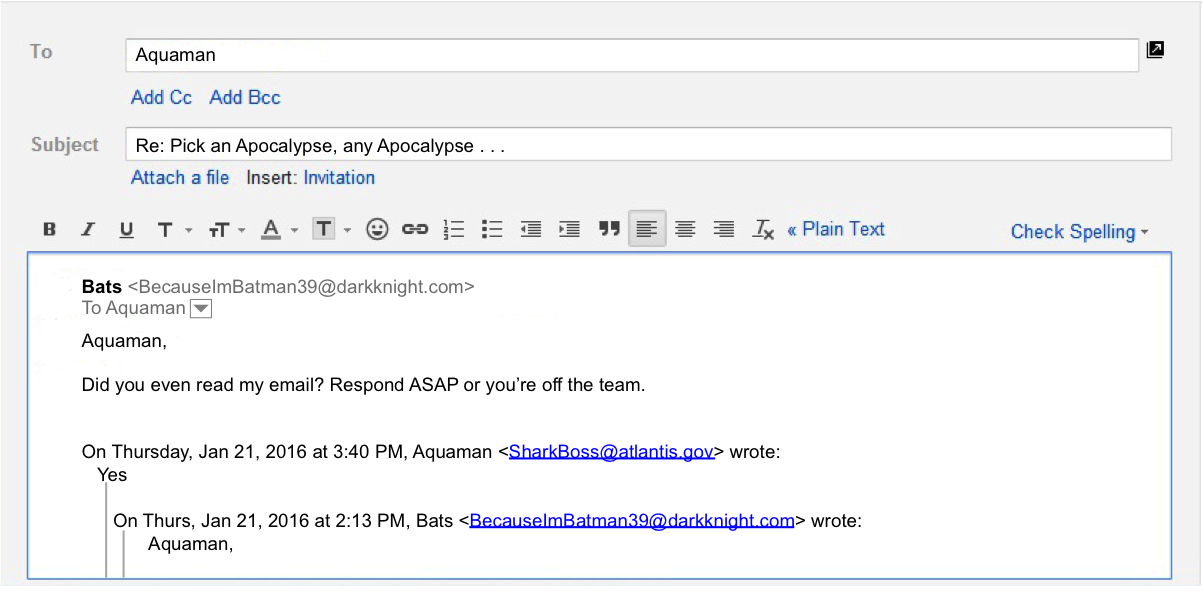
7. Know when to pick up the phone.
Not all correspondence can (or should) be handled via email. As stated above, some issues become too complex, or involve too many people, to remain confined to an email. And don’t use email to cancel a meeting at the last minute, or to send bad news.
How your company communicates—both internally and with clients or partners—indicates your reliability, and responsiveness. Adopting these tips will help your business emails measure up to the polish and professionalism you hope to project.
Be sure to share any tips you have in the comments. And when the situation demands a phone call, learn how a GoToConnect cloud phone system can help you communicate better.
